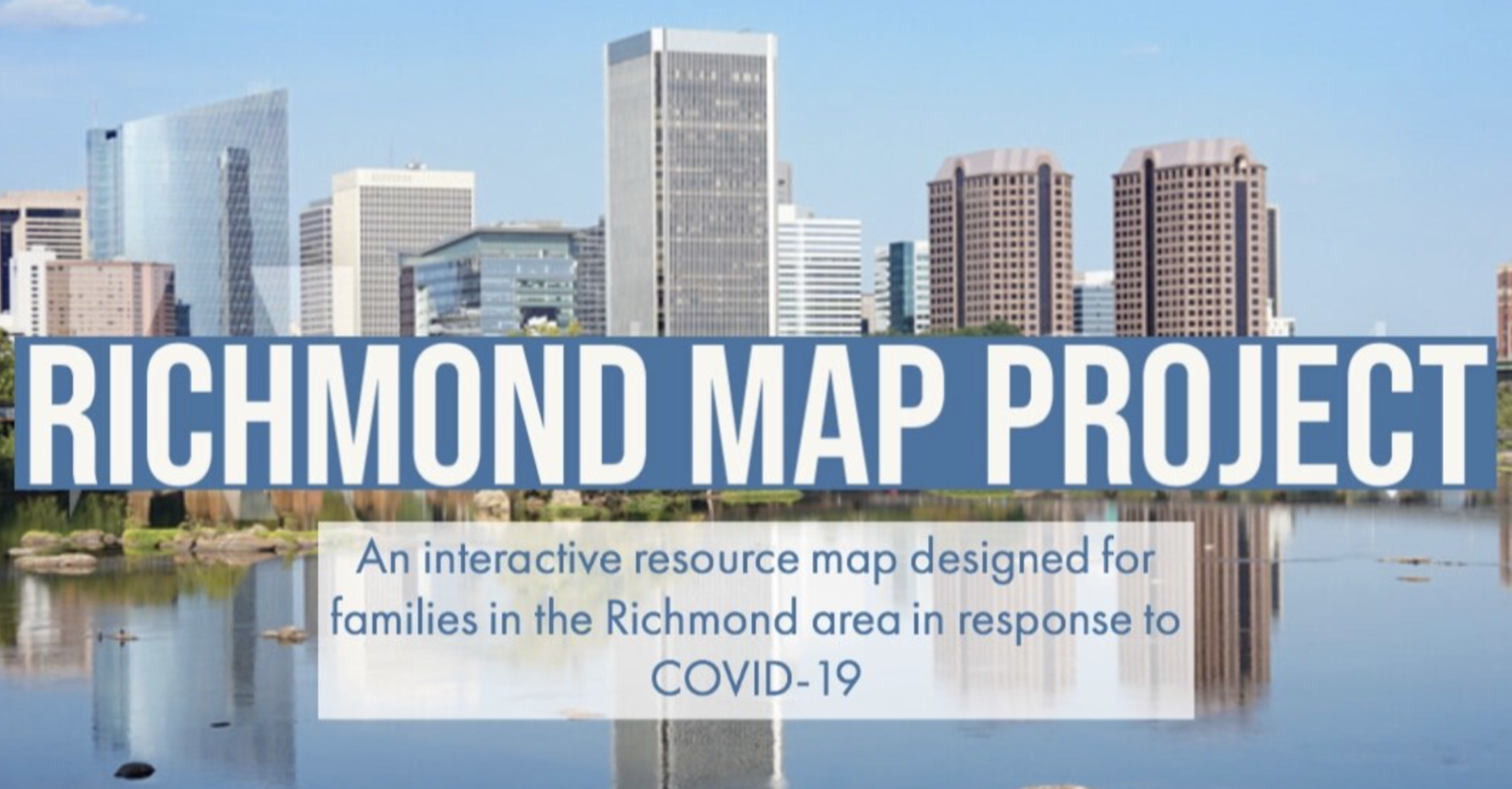Community Mapping Project
On both a national level and here in Richmond, Virginia, Black, Latinx, and Native American populations are being hospitalized for COVID-19 disproportionately to the rest of the population, according to ABC8 News. Our research interviews at Highland Support Project (HSP) also uncovered that all families we spoke with reported COVID-19 exacerbated or created challenges related to English, literacy, economic status, and supporting their children’s education. Virtual education and providing special needs support and healthcare were particularly frequent hardships. HSP’s founder, Guadalupe Ramirez, has been volunteering and translating at the Belmont United Methodist Church’s weekly food pantry, and has noted increasing numbers, especially of Latinx families.
The Map
The map itself was a collaborative effort of research by Gabrielle Beaven and Natalie Battaglia, two VCU Master’s of Social Work students, digital mapping by Katie Hahn, a geography major from Virginia Tech, and oversight by Madison Sweitzer, the Outreach Director of Highland Support Project.
The interactive virtual map is categorized by transportation, public safety, health services, food services, and community outreach. The map is currently in English and Spanish with interactive symbol elements to guide those with limited proficiency. All of the elements included in the map have been researched and contacted to confirm their current COVID-19 accessibility. However, this map is designed to be a live document that can be edited to reflect changes in services, add options as they become available, and eventually be translated further to reach additional populations.
As we compiled resources, it became clear that we couldn’t analyze the current geography of Richmond without also studying its origin story.
Research and History
In order to fully understand the significance of this map, it is important to note demographics and evaluate the geographical, racial divisions within the Richmond area. According to the United States Census Bureau (2019), Richmond’s population estimates about 230,436. About 0.04% of this population are American Indian and/or Alaska Native and about 6.7% are Hispanic or Latinx. When looking at individuals who are born outside of the United States, the census estimates 15,439 individuals between the years of 2014-2018. Surrounding counties of Richmond, including Henrico and Chesterfield, have had a 25% increase in population between 2000-2016. This growth in population is thought to be contributed by the influx of minority populations, including Latinx (Columbia University, n.d.).
When mapping out the city in the 1930s, appraisers redlined Black neighborhoods, marking them as “hazardous” regardless of the actual income of the neighborhood. This led to low investments in these redlined communities and high investments in white neighborhoods. This unequal distribution in wealth impacts the historically redlined communities today. For example; there is lower access to resources, which is reflected in the map provided. Resources that lack in these neighborhoods include: doctor’s offices, grocery stores with fresh produce, transportation, etc. Not only is there lower access to resources, but there are higher temperatures in these areas due to less trees and more asphalt (Plumer et al., 2020). Environmental factors such as heat and air pollution does not bode well for redlined communities because of the impacts on health. This is why it is crucial to note the intersectionality of health, race, poverty, and access to resources in redlined neighborhoods such as; Gilpin, Jackson Ward, Oak Grove, and Church Hill.
Overall, Richmond neighborhoods have deep patterns of racial segregation as a result of redlining tactics utilized through historical housing policies (Plumer et al., 2020). Creating maps such as this one aids individuals in visualizing the effects racism has on communities today. Not only is this map meant to connect individuals to necessary resources, but it was created with the hope to start a conversation around the implications of racial divisioning in a city such as Richmond.

